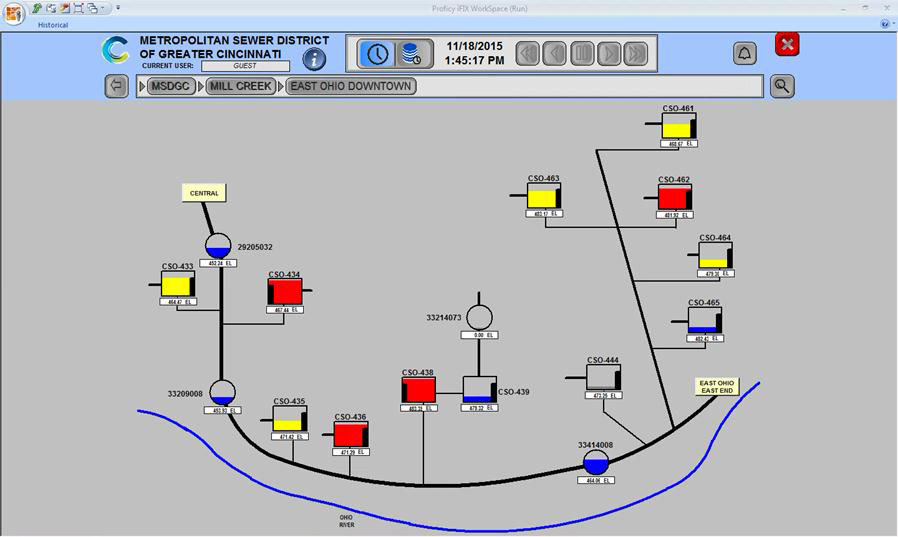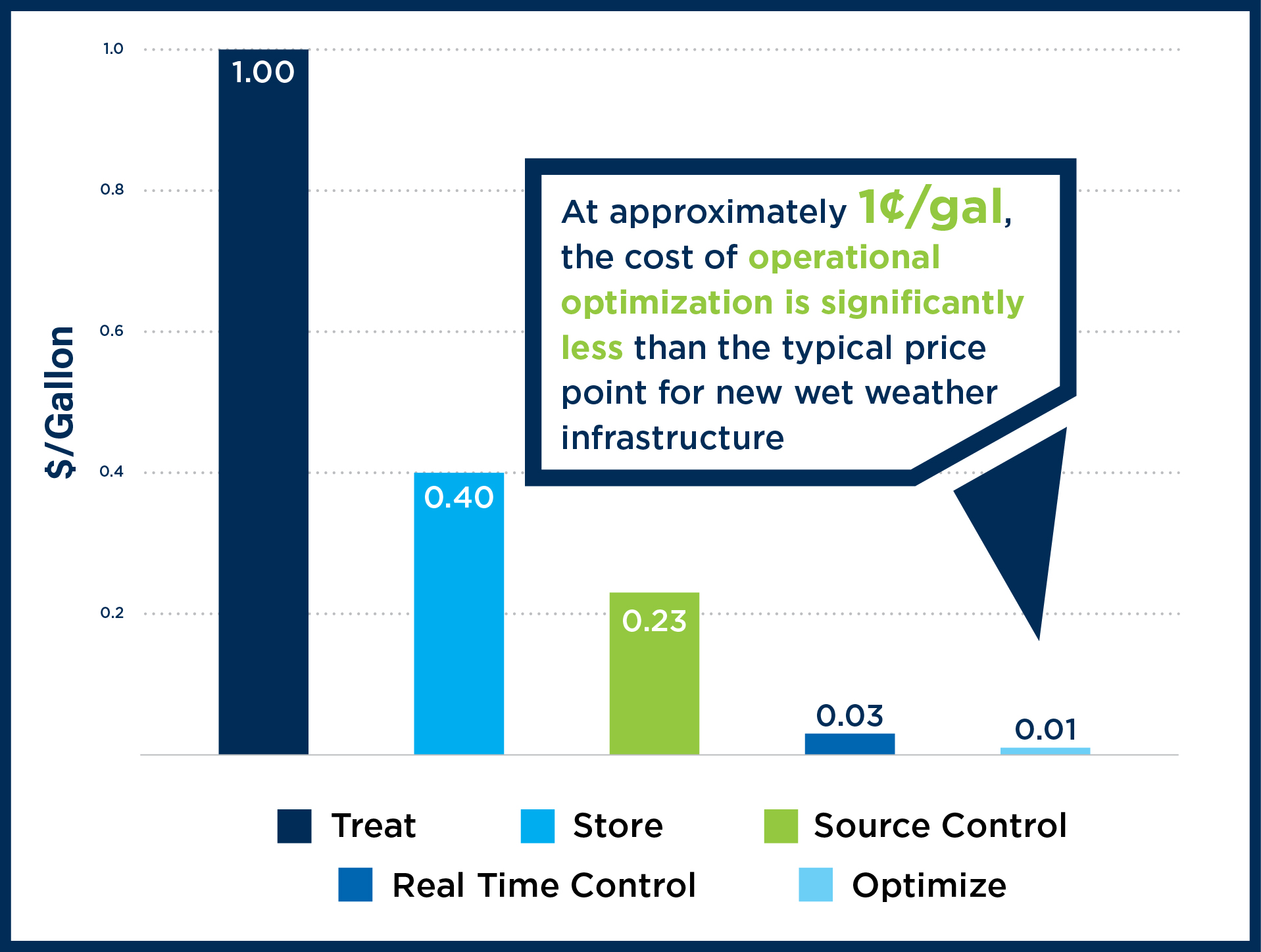Using Smart Sewers to Reduce Overflows
MSD is building a "Smart Sewer" system that is helping to reduce sewer overflows into our creeks and rivers. And the cost is less than any other solution, gray or green.


Smart Solutions
Like many wastewater utilities across the nation, MSD is faced with a multi-billion dollar Consent Decree (federal mandate) to reduce sewer overflows when it rains.
To help address this issue, MSD has been working to use its existing sewer system more efficiently. For example, when it rains in one part of Cincinnati, the interceptor sewers in that location may be full, but other areas where it hasn’t rained may have available capacity.
This approach, known officially as Wet Weather Operational Optimization, allows MSD to store flows inside large interceptor sewers, storage tanks, and high-rate treatment facilities in different parts of the sewer system, using sensors to measure flow levels and gates and valves to direct the flows controlled by a SCADA computer system.
This helps keep sewage in the pipes and out of our creeks.
MSD has deployed its Smart Sewer system across our service area and is now advancing the construction of new "control points" at targeted overflow locations. The additional of operable gates will enable more flow to be intercepted and taken to a treatment plant when capacity is available in downstream pipes.
Smart sewers cost about $0.01/gallon of overflow volume reduced, as compared to about $0.23/gallon for green stormwater controls and about $0.40/gallon for gray solutions such as larger pipes and storage tanks.
MSD's smart sewer system is anticipated to save tens of millions of dollars in capital investments in projects to control sewer overflows.